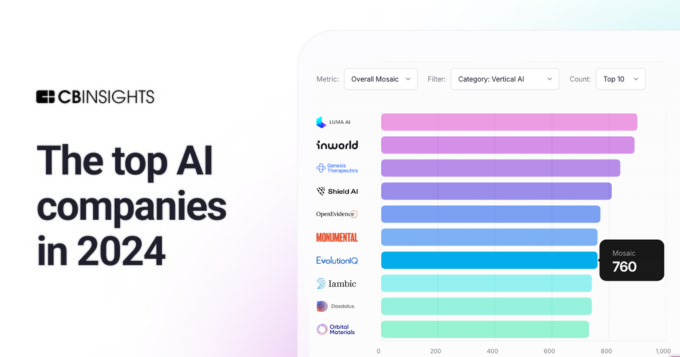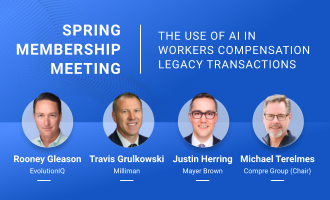Insurance claims management is drowning in the quantity and complexity of data involved with each claim, as many last for years and are filled with hundreds of pages of both structured and unstructured data. The result is costly – and it’s priming the insurance industry for one of the most significant innovations in the past hundred years: a fundamental switch in its underlying methodological approach.
Enabled by deep learning AI, leading carriers are now adopting a next-generation approach to claims adjustment that is purpose-built for today’s tech-driven landscape. It’s one that allows insurance carriers to better know when and why to act on a specific claim, with the vast caseloads reprioritized daily based on new data and insights.
The switchover represents the next phase of evolution for the industry and is already significantly reducing duration, expenses, and losses at a number of early adopters.
Shortfalls of the Traditional Methodology
The most commonly used process among insurance carriers to monitor claims is essentially calendar-based, even in organizations augmented by various new software applications. This method fundamentally has examiners auditing all case information at one specific, recurring time in order to ensure that a complete update of the case has occurred since the file was last reviewed. While there are many variations, the system primarily works on a time-interval-based model, with claims revisited after a pre-specified amount of time has elapsed, such as 30, 90, or 180 days. But these set reviews rarely correspond with the highest value claim or the earliest intervention opportunity.
When coupled with an often overwhelming increase in both case numbers assigned to each examiner and the complexity of data per case, this approach can lead to dramatic shortfalls.
First and foremost, there is a lack of actionable insights. Organizations in the insurance industry and beyond are obsessed with data – and rightly so. Data-backed decision-making helps mitigate the risk of bias and human error, resulting in informed strategies and time-optimized processes.
But data alone isn’t enough to reap the potential benefits. Carriers need interpretation. They need a system or team that evaluates raw information and extrapolates actionable insights. However, many frontline insurance workers don’t have the resources required to sift through the amount of data, derive fact-based conclusions, determine the best course of action, and then execute.
This can occur even within the context of systems that claim to leverage the time-saving power of AI. The insurtech space is booming and an increasing number of solutions are hitting the market, promising to deliver greater savings and increased efficiencies. Despite the array of options, they are still using the same old methodology – which is to review cases at suboptimal times and without context.
How the Claims Adjustment Methodology is Evolving
As technology advances, insurance data has evolved, too. The industry moved from paper to digital. Data visualization then delivered historical insights. And real-time data provided access to raw information and paved the way for data analytics, which allows insurers to ask questions about the future and get answers based on past trends and performance. The next phase of the claims adjustment methodology will involve continuous decision guidance.
Here, examiners are no longer tasked with asking the question. Instead, intelligent AI identifies what to work on, informs adjusters why the action was recommended, and sets a goal for the optimal outcome. This allows cases ready for action or resolution to get the attention needed first – and frees examiners to focus on the most interesting, most complex, and most impactful decisions. Importantly, the system re-evaluates an entire block of thousands of active claims daily, after which a new, value-optimizing strategy is built and executed. Essentially, a division of labor is created in which the machine-based system ‘thinks’ strategically across large blocks of claims; digests, understands, and learns from vast amounts of data; and then surfaces recommended options – and why they were chosen – to the human examiner, who then makes all of the decisions.
Four Foundational Pillars of the New Methodology.
The modernized adjustment methodology dramatically reduces claim durations, losses, and expenses by upholding four key pillars:
- Selecting the right claims. Within the context of old methodology, examiners typically work according to time-based intervals. In contrast, the new methodology ensures examiners always undertake claims that will deliver the highest value for the carrier.
- Acting early in the life cycle. Claims approached according to pre-selected time intervals are rarely worked at the earliest intervention opportunity. Using a continuous, precision guided approach, claims are worked early in their lifecycle, guaranteeing an opportunity for intervention.
- Delivering an actionable referral. The new methodology ensures claims are referred to adjusters with context and an objective reason why the claim has become actionable – for example, a recent medical event has occurred. Claims are not reviewed for the sake of being renewed as in the traditional approach.
- Providing objective-driven resolutions. In a traditional system, referred claims do not come with a recommended action. Instead, examiners are expected to leverage their experience and data interpretation to identify the appropriate next steps. The sheer quantity of data paired with a skilled talent shortage makes selecting the highest-value action difficult. In the modern system, however, all referrals are objective-driven. Here, examiners are tasked with a mission that will result in a specific outcome, such as a resolution. For example, the mission might be to close the claim in 45 days due to an expected medical recovery.
Insurance carriers are face-to-face with more data than ever, and more and more carriers are coming to the conclusion that their core claims adjustment methodology must catch up. For first movers, it’s not only a path to immediate cost-savings and increases in efficiency, staff morale and claimant satisfaction, it sets a course for competitive advantage by essentially harnessing deep learning to future-proof their systems.

